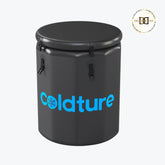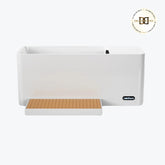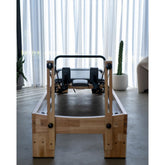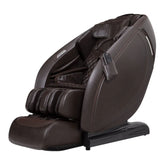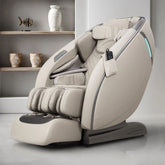Curious about when to use ice versus heat for natural pain relief? Whether you're looking to cut back on medication for back pain or simply want an effective way to manage discomfort, our guide covers everything you need to know about using heat or ice for pain. We've also included insights on an alternating natural therapy that might offer longer-lasting relief.
Heat vs. Cold for Natural Pain Relief
Pain occurs when our nervous system interprets certain signals as injury-related. When exposed to triggers like pressure, chemicals, or extreme temperatures, pain receptors release neurotransmitters that travel through the spinal cord and central nervous system to the brain. The brain then processes this information and sends a response back, all in milliseconds, guiding the body on how to react.
Acute pain is short-term and usually linked to an injury. Chronic pain can last much longer, often affecting joints or the spine due to poorly healed injuries or health issues. Pain can also be:
- Inflammatory pain: From the body's immune response to injury or strain.
- Neuropathic pain: From nerve damage, sometimes related to conditions like diabetes.
- Radicular pain: Deep pain and numbness due to spinal nerve issues.
- Psychogenic pain: Pain influenced by mental factors like anxiety or PTSD.
- Nociceptive pain: Aching from tissue damage, often seen in acute injuries.
For muscle or joint pain, a natural pain relief approach can feel overwhelming, but starting with heat or ice is a great first step.
How Ice Helps with Pain
Ice reduces pain by lowering skin and muscle temperature, slowing blood flow, and numbing nerve endings, which blocks pain signals to the brain. This can also reduce inflammation and swelling.
Ice is also immunostimulating, potentially boosting your immune system and preventing future pain. Common uses include:
- Ice packs or wraps for injuries like a broken ankle.
- Cold compresses for conditions like gout.
- Cold baths, showers, or cooling creams and gels.
Benefits of cold therapy, like ice baths, include:
- Flushing out lactic acid and waste that causes swelling.
- Slowing metabolic activity to speed healing.
- Increasing neurotransmitters like norepinephrine and endorphins to improve mood, focus, and pain tolerance.
- Reducing muscle soreness.
How Heat Helps with Pain
Heat works by increasing skin and muscle temperature, causing blood vessels to dilate and boosting circulation. This brings more oxygen and nutrients to the affected area, aiding in waste removal and healing. Heat can:
- Soothe shingles or arthritis pain with capsaicin, found in chili peppers.
- Ease migraines with heating pads.
- Relieve chronic back pain with hot tubs or saunas.
Heat therapy benefits include:
- Faster muscle repair and less pain.
- Improved muscle elasticity and circulation.
- Increased beta-endorphins and Brain-Derived Neurotrophic Factor (BDNF), which may reduce pain transmission.
When to Use Ice vs. Heat for Pain
In general, ice is best for acute injuries shortly after they occur, especially when swelling and inflammation are significant. Heat is better for relaxing chronic pain, stiffness, and tension.
When to Use Ice for Pain Relief
- Immediately after a ligament sprain or tear.
- During plantar fasciitis flare-ups.
- After intense workouts to soothe sore muscles.
When to Use Heat for Pain Relief
- To manage chronic conditions like ankylosing spondylitis or rheumatoid arthritis.
- For delayed onset muscle soreness (DOMS) post-workout.
- For pain requiring moist heat, like from baths or steam rooms.
Why Not Use Both? Alternating Heat and Ice for Pain Relief
You don’t always have to choose between ice and heat. Contrast therapy, which alternates between the two, can provide the benefits of both.
Contrast therapy involves cooling and heating the body in cycles to maximize pain relief. For example, ice your knee after an injury and apply heat once swelling subsides, or use heat in the morning for chronic pain and ice in the evening for flare-ups.
Tips for effective contrast therapy:
- Decide whether to start with heat or ice based on your goals and conditions.
- Practice contrast therapy 2-3 days a week, or even daily.
- Alternate between 12-15 minutes in a sauna and 5 minutes or less in a cold plunge.
- Stay hydrated and keep your sauna and cold plunge close together.
- Aim for 2-3 cycles, ending with a cold plunge.
Experience Natural Pain Relief with Contrast Therapy
Using ice or heat can be confusing, but combining both through contrast therapy may provide the best natural pain relief. Cold therapies like ice baths are great for inflammation, while heat therapies like saunas help with chronic pain and stiffness. When used together, they can enhance recovery and resilience.
For the best results, regular contrast therapy is key. Having your own sauna and cold plunge at home offers convenience, privacy, and a relaxing environment for your routine.
Our Sauna and Plunge options come with financing and customization, making it easy to start your contrast therapy journey. Explore our options today and take the first step toward natural pain relief in the comfort of your home!

